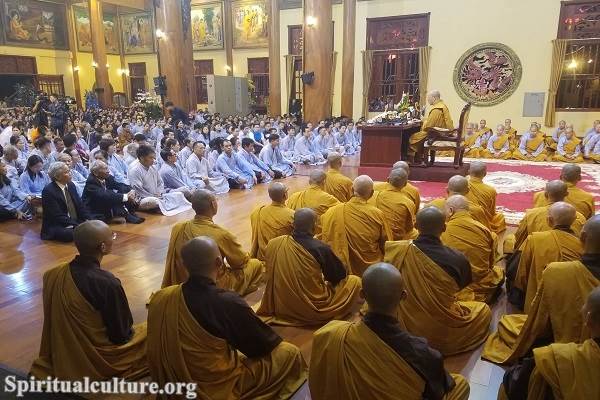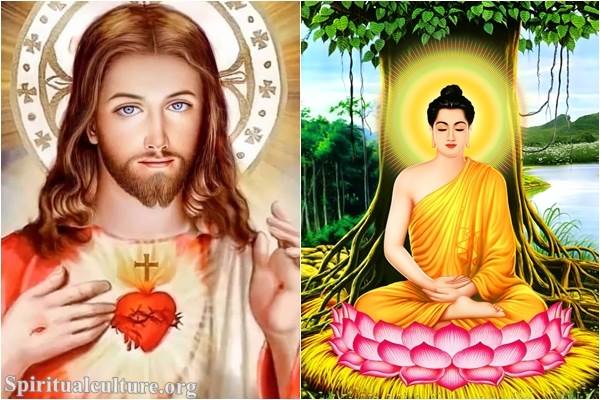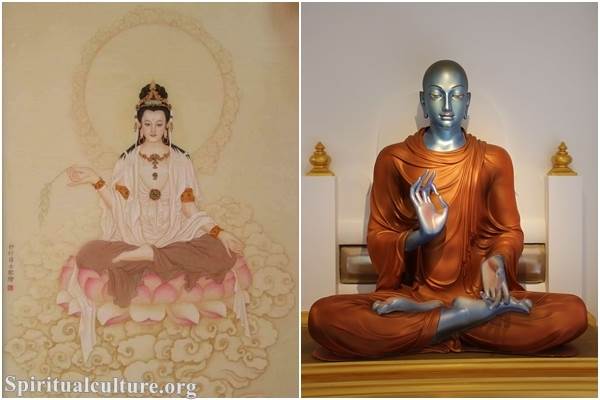The Medicine Buddha, Bhaisajyaguru, is considered one of the eight medicine Buddhas in Mahayana Buddhism. In the Buddhist tradition, he is depicted holding a medicine bowl and a myrobalan plant, symbolizing his ability to heal both physical and mental ailments.
Bhaisajyaguru is believed to have the power to remove physical and mental obstacles, bring happiness and peace, and heal all suffering. He is considered a protector and teacher, who uses his wisdom and compassion to guide beings to the path of liberation.
In Buddhist practice, visualization of the Medicine Buddha and recitation of his mantra are believed to have healing benefits, both physically and mentally. It is said that by invoking his blessings and studying his teachings, one can attain inner peace and physical well-being, and purify negative karma.

Bhaisajyaguru – The Medicine Buddha is also often associated with the concept of “interdependent origination,” which states that everything in the universe arises in dependence on other things. This includes both physical and mental suffering and the path to liberation. By recognizing the interdependence of all things, one can cultivate the wisdom and compassion necessary to heal oneself and others.
Bhaisajyaguru – The Medicine Buddha is an important figure in Buddhist practice and is widely revered in many countries, including India, Tibet, China, Japan, and Southeast Asia. In some Mahayana traditions, he is considered a bodhisattva, a being who has achieved enlightenment but has chosen to remain in the world to help others reach enlightenment.
There are many different sutras, or teachings, associated with the Medicine Buddha, including the Sutra of the Medicine Buddha and the Sutra of the Bodhisattva Ksitigarbha’s Fundamental Vows. These sutras describe the benefits of invoking the blessings of the Medicine Buddha and provide guidance on how to develop the qualities of wisdom and compassion necessary to attain liberation.
In addition to reciting the mantra and visualizing the Medicine Buddha, other practices associated with this buddha include making offerings to the image of the Medicine Buddha, practicing generosity and other virtues, and studying and contemplating the teachings of the Buddha.
It is also common for Buddhist communities to hold special rituals and ceremonies in honor of the Medicine Buddha, such as puja (worship) and offerings of food and incense.
In some traditions, the Medicine Buddha is also depicted in paintings and sculptures, and his image can be found in many Buddhist temples and monasteries.
In addition to its spiritual benefits, the Medicine Buddha is also considered to have practical applications in traditional medicine. In some cultures, the teachings and practices associated with the Medicine Buddha are integrated into traditional medical systems and are used to promote healing and prevent disease.
Overall, Bhaisajyaguru – the Medicine Buddha is considered a source of inspiration, guidance, and protection, and is widely revered as a symbol of the power of compassion to overcome suffering.
By engaging in the practices associated with this buddha, one can cultivate the inner qualities of wisdom and compassion, and attain physical, emotional, and spiritual well-being.



